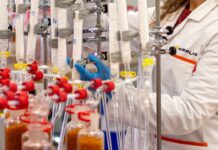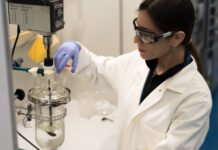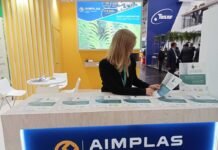The LIFE EXTRUCLEAN project has developed an innovative process to remove hazardous substances from plastic waste. This represents a good example of upcycling – creating a higher quality recycled material. This type of upcycling is particularly relevant to the new EU Circular Economy Package (December 2015), which prioritizes approaches that address hazardous substances.
AIMPLAS coordinates the Spanish LIFE project, in collaboration with AIDIMA, ARVET, ACTECO and Enplast. They recently announced that their new decontamination technology eliminates 70% more hazardous substances from plastic waste than the main conventional process.
The conventional process for removing hazardous substances from plastic waste utilizes a triple washing and drying method that requires large amounts of water, cleaning agents and energy, and produces a large volume of waste water. In addition, the recycled plastic obtained is generally of low value.
The new technique developed by the LIFE EXTRUCLEAN project is innovative because it uses supercritical carbon dioxide (sc-CO2) in the extrusion phase of the plastic recycling process. This technique was optimized in the laboratory to eliminate hazardous substances from plastic waste packaging that had been contaminated by its contents (such as solvents).
In addition to producing a higher-quality recycled plastic, compared to conventional methods the new process reduces both labour time and the consumption of water and energy, as it eliminates the need for two of the three washing and drying stages. The recycled plastic will be used in containers for hazardous substances, thereby closing the life cycle for this type of recycled plastic. The task ahead for the final part of this innovative LIFE project will be to upscale the technology to an industrial level, and to validate the material for commercial use.











